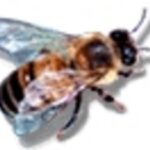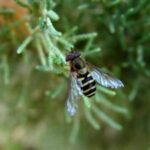Bee stings are quite common and most persons stung by a bee will have only a local reaction. About 4% of people are allergic to bee venom and can experience a severe reaction involving the entire body. This allergic reaction can result in its extreme form can lead to shock and even death. That’s why it’s important to monitor a bee sting closely and seek bee sting treatment immediately if signs of an allergic reaction occur.
If you are known to have an allergy to bee venom, you should contact your doctor so he can give you an injectable medication to carry with you called epinephrine. When injected immediately after a bee sting, this drug can offset the affects of an allergic reaction. Time is of the essence when treating an allergic reaction to a bee sting as symptoms occur within minutes of the sting. Symptoms may include lightheadedness, dizziness, nausea, vomiting, blurred vision, and wheezing. Your blood pressure may drop very quickly resulting in shock which can lead to death. An ambulance should be called immediately if any of these symptoms occur.
Fortunately, most person when stung by a bee experience a reaction only at the site of the sting. Some of the signs of a localized reaction to a bee sting are redness, swelling, pain, and itching. In some people, the swelling can be quite marked. This is caused by a reaction to the venom which is present on the bee’s stinger which makes it important that the stinger be removed as soon as possible.
What should you do if you or someone you’re with receives a bee sting?
First, make sure there are no signs or symptoms of an allergic reaction. Signs should become obvious within a few minutes of the event. If this should occur, seek medical attention immediately. Assuming these signs are present, here’s how to proceed with bee sting treatment:
1. Locate the stinger by looking for a raised bump on the skin. If you look carefully, you should a see a small black dot within the welt which is the stinger.
2. Using a sturdy pair of tweezers, grasp it firmly and pull.
3. Gently wash the affected area with either alcohol or soap and water.
4. Immediately apply a cold cloth or cold compresses to relieve the swelling.
5. If pain is a significant problem, you can take aspirin or ibuprofen. This will also help to reduce the swelling to some degree.
6. If itching develops, an oral antihistamine such as Benadryl may be taken. Be sure not to drive after taking this medication as it can make you sleepy. Sometimes applying alcohol or calamine lotion topically will help with the itch.
7. Localized symptoms may last for a day or two or up to a week.
If you or someone else was stung by a bee more than 10 times or if sting occurred within the mouth or on the tongue, seek medical attention immediately since serious reactions can sometimes occur in these situations even in a nonallergic person.
Now that you know the principles of bee sting treatment, you’ll be prepared to fully enjoy the sun and all the pleasures summer has to offer!



